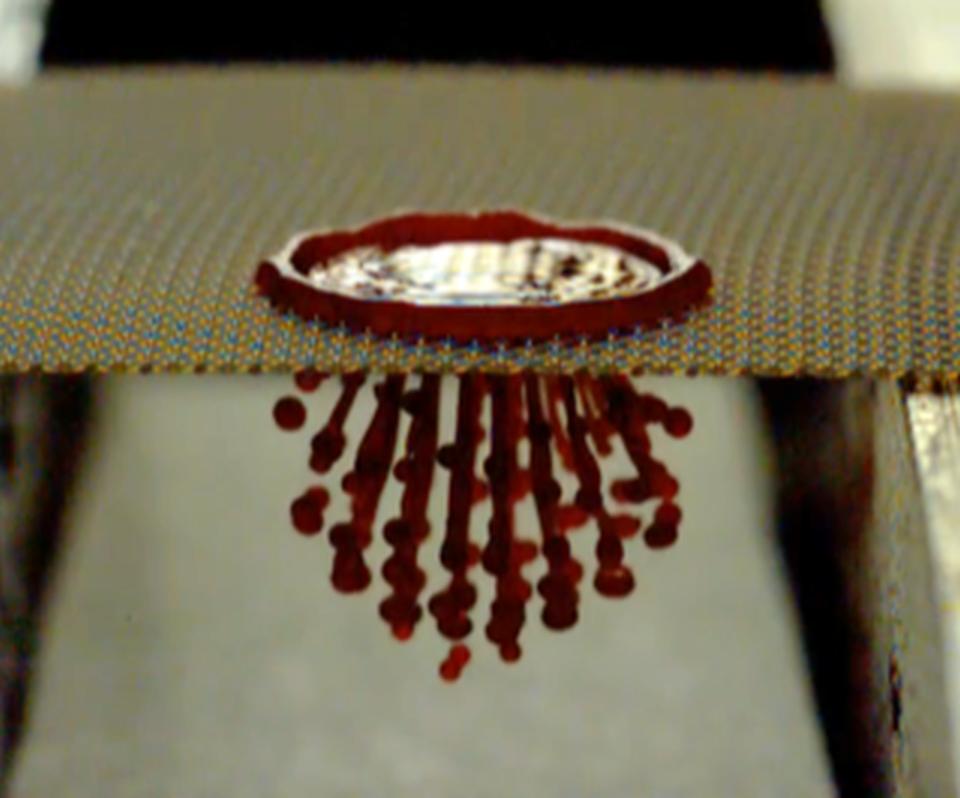A fabric's physical properties, such as its wettability and porosity, affect the stain left behind by an impacting droplet. How can forensic scientists decipher meaning from the shapes of these stains? Researchers have developed an approach to blood droplet analysis that can help investigate crime scenes.
Picture a crime scene with different types of fabrics strewn all over the place, all stained with blood. Some of the stains are little, seeping along individual threads; some are large, soaking all the way through the cloth. This poses a challenge to investigators.
A team of researchers from the University of Amsterdam, the University of Sherbrooke (Canada) and EMPA, together with Professor Jan Carmeliet from the Chair of Building Physics at the Department of Mechanical and Process Engineering, were looking for a solution to this problem. They observed droplets impacting onto different kinds of fabric and assessed key parameters in determining the pattern of the stains left behind by the droplets, including the velocity, the fabric's wettability and the size and density of the pores in the fabric.

The team compared droplet impact on three polyester materials with different pore sizes and yarn thicknesses, as well as a solid and a patterned steel surface. After comparing their numerical simulations with experimental data, they examined the impact of a drop on a fabric placed atop another surface, as well as a piece of fabric suspended in air.
"We wanted to answer an important forensic question: Can you distinguish - for instance, on a piece of clothing - a blood stain from the impact of a blood drop from a stain that originates from contact with a bloody object?" said author Daniel Bonn from the University of Amsterdam.
Since the present work only looks at one particular type of weaving, additional studies are needed in order to obtain more definite conclusions. "The question remains how our findings can be generalized to any type of clothing or fabric - there are often bloodstains on carpets also - and how this can be used in practice by forensic scientists on a crime scene," said Bonn.
Reference
TC de Goede, AM Moqaddam, K Limpens, S Kooij, D Derome, J Carmeliet, N Shahidzadeh, D Bonn: Droplet impact of Newtonian fluids and blood on simple fabrics: effect of fabric pore size and underlying substrate, Physics of Fluids 33, 033308 (2021), doi: https://doi.org/10.1063/5.0037123
Original article
Original article by AIP Scilight, Anashe Bandari: https://aip.scitation.org/doi/10.1063/10.0003704






